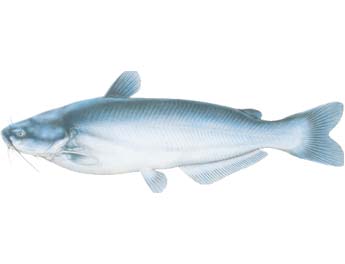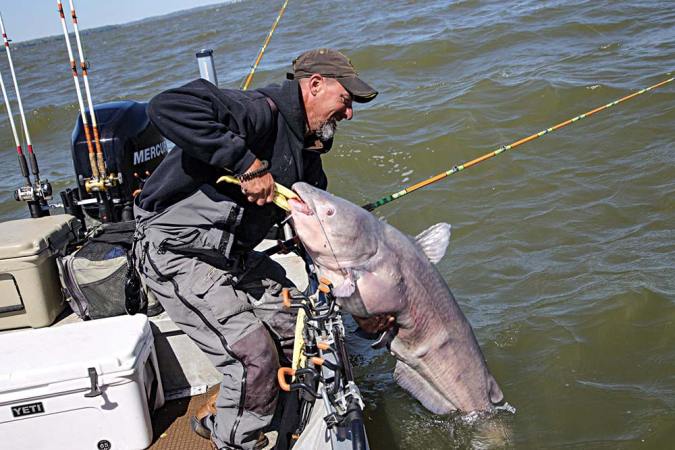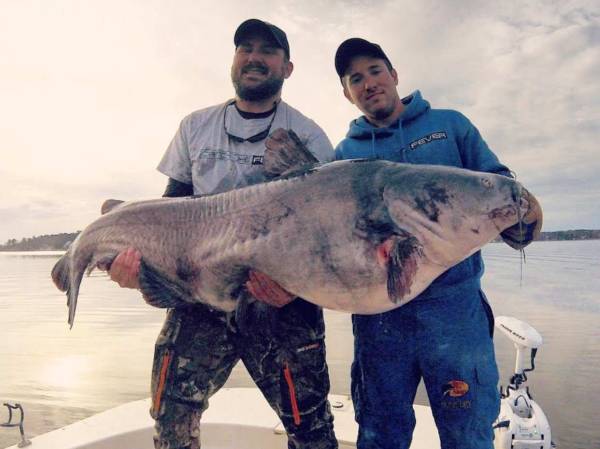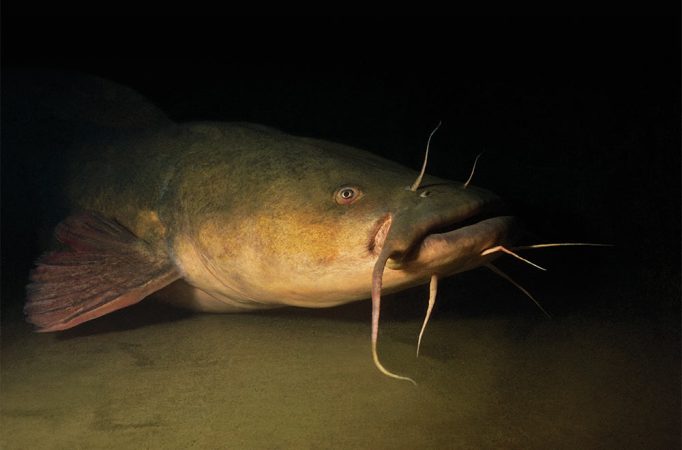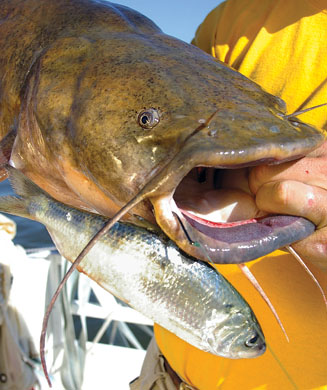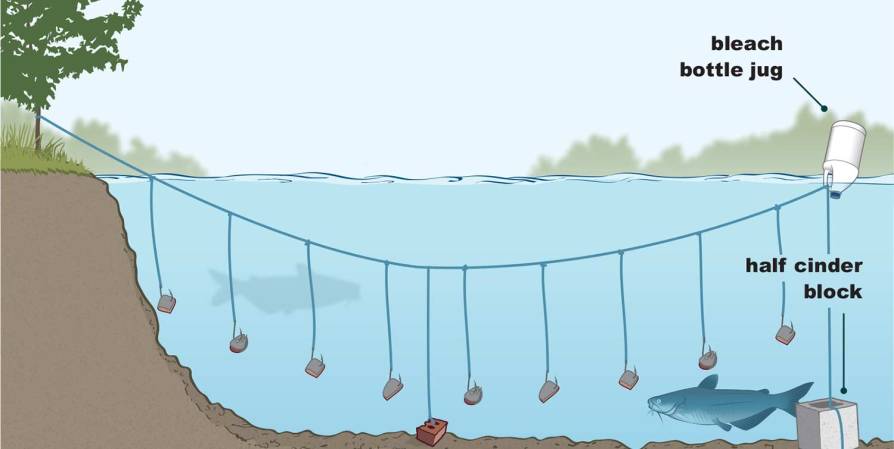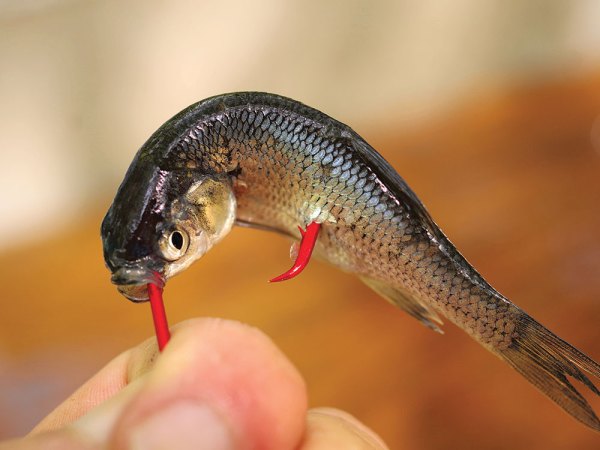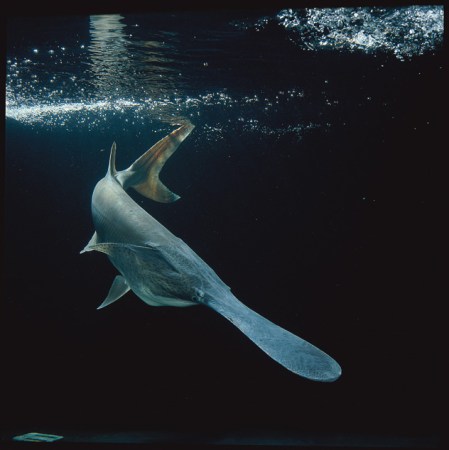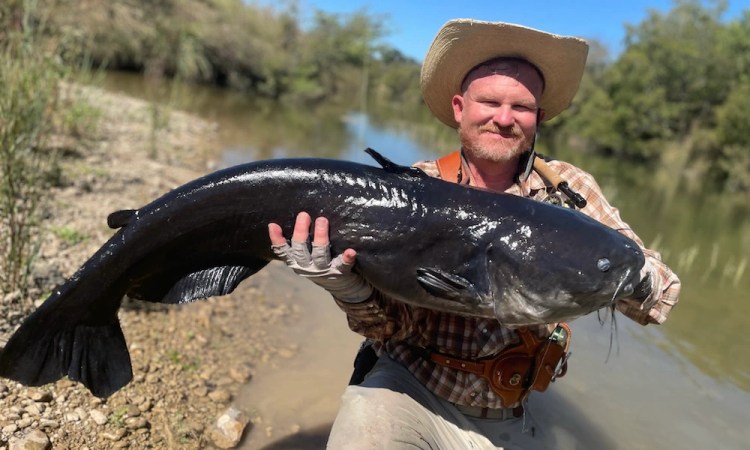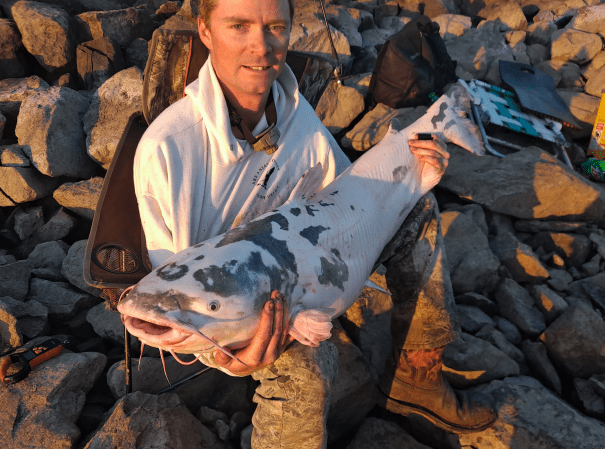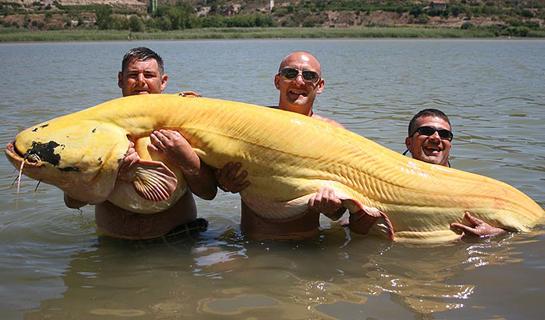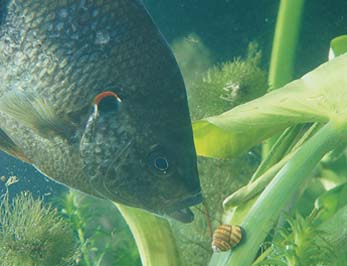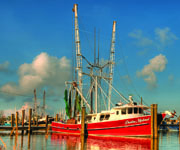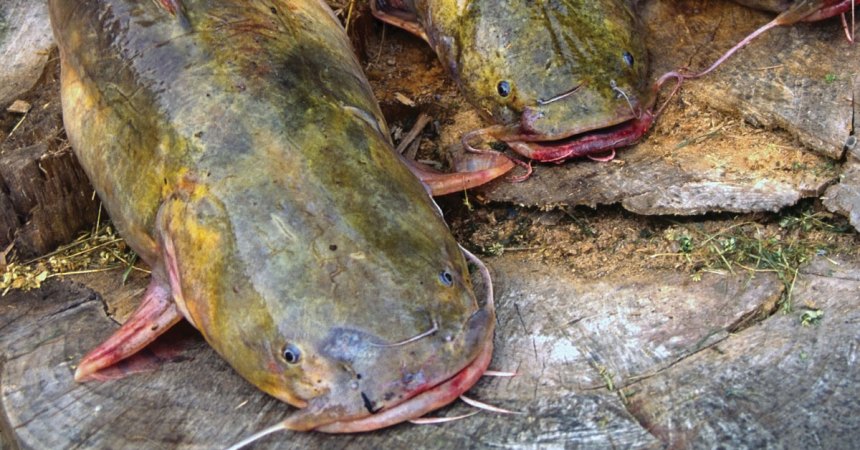Blue catfish are the largest of North America’s various catfish species. In the mid-1800s, when commercial catfishing in the Mississippi River was a booming industry, blues upward of 200 pounds were caught. The journals of Lewis and Clark and their men reported that blue catfish were among the food eaten by the expedition on the lower Missouri River in 1804 and again on the return trip to St. Louis in 1806.
**1. Habitat and Range **
Blue cats thrive in rivers and large impoundments. In rivers, they favor faster, clearer water than channel cats do and are usually found over a bottom of clean sand, gravel or rubble.
Blue catfish prefer water temperatures between 77 and 82 degrees. Like channel catfish, blues are often found in tailrace areas, where food is abundant.
Blue catfish are native to the Mississippi, Missouri and Ohio river drainages, and their range extends south into Mexico and northern Guatemala. Blues have been stocked successfully in many reservoirs in both the eastern and western U.S.
2. Description
As their name suggests, blue catfish are bluish to grayish in color, although some individuals are silvery, accounting for the rarely used name “silver cat.” Blues, with their deeply forked tail, resemble channel cats and are sometimes called “blue channel cats.” But unlike channel catfish, the flanks of blue catfish are not spotted (even on small fish), and their anal fin is considerably longer, with a straighter edge.
Blues are somewhat stockier than channels and their heads are smaller in proportion to the rest of their bodies. Their profile is straight and steeply sloped from the dorsal fin forward, giving their bodies a distinctive, wedge-shaped appearance.
[pagebreak] 3. Age and Growth
Blues have a longer life span than other catfish; the largest specimens are usually more than 20 years old. Growth varies greatly in different bodies of water, depending on forage availability. In the Louisiana Delta, for example, blues grow to 33.4 inches (about 17 pounds) in only six years. In Lake Chickamauga, Tenn., they reach only 1.2 pounds in the same amount of time. Most blue catfish taken by today’s anglers are in the 3- to 15-pound range.
**4. Sporting Qualities **
Blue cats offer anglers something that few other freshwater gamefish can: the possibility of catching a 100-pound-plus-fish. In the 1800s, blues evidently reached much larger sizes. In his book, Steamboating: Sixty-Five Years on Missouri’s Rivers, William Heckman reported, “The largest known fish ever caught in the Missouri River was taken just below Portland. This fish, caught in 1866, was a blue channel cat and weighed 315 pounds.”
** 5. Sporting Qualities **
Blue cats offer anglers something that few other freshwater gamefish can: the possibility of catching a 100-pound-plus-fish. In the 1800s, blues evidently reached much larger sizes. In his book, Steamboating: Sixty-Five Years on Missouri’s Rivers, William Heckman reported, “The largest known fish ever caught in the Missouri River was taken just below Portland. This fish, caught in 1866, was a blue channel cat and weighed 315 pounds.”
